- en Change Region
- Global Site
Software Packages
NIS-Elements Advanced Research
Optimized for advanced research applications.
Nikon’s flagship NIS-Elements AR software integrates fully automated image acquisition, advanced device control, and powerful analysis and visualization tools. It supports 6D imaging and offers a comprehensive suite of capabilities, including volume rendering, movie creation, image processing, and archiving.
Acquire
- From Single to Multi-Dimensional imaging
- Intuitive display of multi-dimensional datasets with multiple viewing options (e.g. slice, volume, time, spectral, binary, etc.), easy data management, and export-ready
- Go Beyond Image Capture
- Photo-Stimulation
- Perfusion
- Realtime measurements (e.g. Ca2+, FRET) during image acquisition
- Image without Constraints or Limitations with JOBS
- Custom-build your acquisition workflow with graphical programming
- Intelligent Acquisition with JOBS and General Analysis (GA)
- Let the results dictate the acquisition parameters with conditional workflows
- Only acquire meaningful data
- Reduce time spent on data mining
- Maximized Device Performance
- NIS-Elements is designed to optimize the speed at which all components can perform
- Maximize device usage through hardware triggering
- Enables fastest possible image capture times for imaging and tracking fast biological events
- Eliminates unnecessary light exposure, extending the health of the sample for long-term time lapses
- Largest 3rd party integrator in the industry
- Easily integrate and control non-Nikon devices for fully customized experiments
- Quickly adapt to changing research needs by utilizing 3rd party devices
Quantitate
- From simple manual measurements to automatic data collection of hundreds of parameters
- Full suite of binary and image processing tools in General Analysis (GA)
- Multi-channel binary software assay toolbox
- 2D and 3D Tracking and Measurement
- Realtime analysis of live cell dynamics during acquisition
- Intensity Based Measurements
- Morphological Based Measurements
- Object Tracking
Process and Visualize
- Easily view tiled/stitched large images
- Unique Extended Depth of Focus (EDF) view for creating beautiful, high-contrast, in-focus 2D projection images from 3D data (option)
- Advanced 3D and 2D deconvolution algorithms for extending resolution
- Unique visualization options such as XYT view (3D kymograph)
Publish
- Mulitple Image formats
- Advanced movie creator with annotations
- Easily combine images and analysis results to create beautiful figures
- Data export to Excel, Matlab or any third party or customer software
NIS-Elements Basic Research
Geared for acquisition and device control for standard research applications requiring four-dimensional imaging.
Developed for standard research applications such as analysis and photodocumentation of fluorescent imaging, NIS-Elements BR features up to four-dimensional acquisition and advanced device control capabilities.
Acquisition and device control for standard research applications
- Basic Multidimensional Imaging
- Integration of all moving parts so you can focus on science and data
- Measurement
- Intensity, ROIs, Counting, Morphology
- Large Image Stitching
- Show Multi-Channel Data & Timelapse
- Unique Extended Depth of Focus (EDF) view for creating beautiful, high-contrast, in-focus 2D projection images from 3D data (option)
NIS-Elements Documentation
Dedicated photo‑documentation software package with basic measuring and reporting tools.
NIS-Elements D is a documentation viewer allowing users to perform routine “point-and-shoot” image acquisition, manual measurements, and optional automated object counting.
Easy capture, processing, and storage
- Easy camera controls and presets
- Flexible imaging: Automated XY, Z control, or Timelapse
- Manual and Automated Measurement
- Counting and morphology
- Annotate your datasets
- Unique Extended Depth of Focus (EDF) view for creating beautiful, high-contrast, in-focus 2D projection images from 3D data (option)
- High Dynamic Range (HDR) image acquisition combines images acquired with different exposure times to capture the full dynamic range of the specimen in one image (option)
- Supports custom workflow using macros
- Single document interface. Does not support fluorescence imaging nor wavelength switching
Note: NIS-Elements D is not for clinical diagnostic use.
NIS-Elements Confocal & Enhanced Resolution
Integrates confocal specific acquisition controls and advanced image analysis and visualization functionality.
Dedicated interface for Nikon’s confocal and multiphoton systems, providing easy instrument setup and streamlined operation. Incorporates many of the features of NIS-Elements AR for advanced acquisition, image processing, analysis, visualization and data sharing capability.
Resolution
Image resolution is defined as the smallest distance between 2 points that can be resolved. The theoretical limit of resolution for a conventional optical microscope is approximately 200 nm. Higher resolution images can be theoretically achieved with confocal microscopes, but this has not been effectively achieved. Resolution can be increased beyond the conventional confocal image resolution (up to ~1.5 times improvement in XY; up to ~1.7 times improvement in Z) by using specific image acquisition and processing techniques.
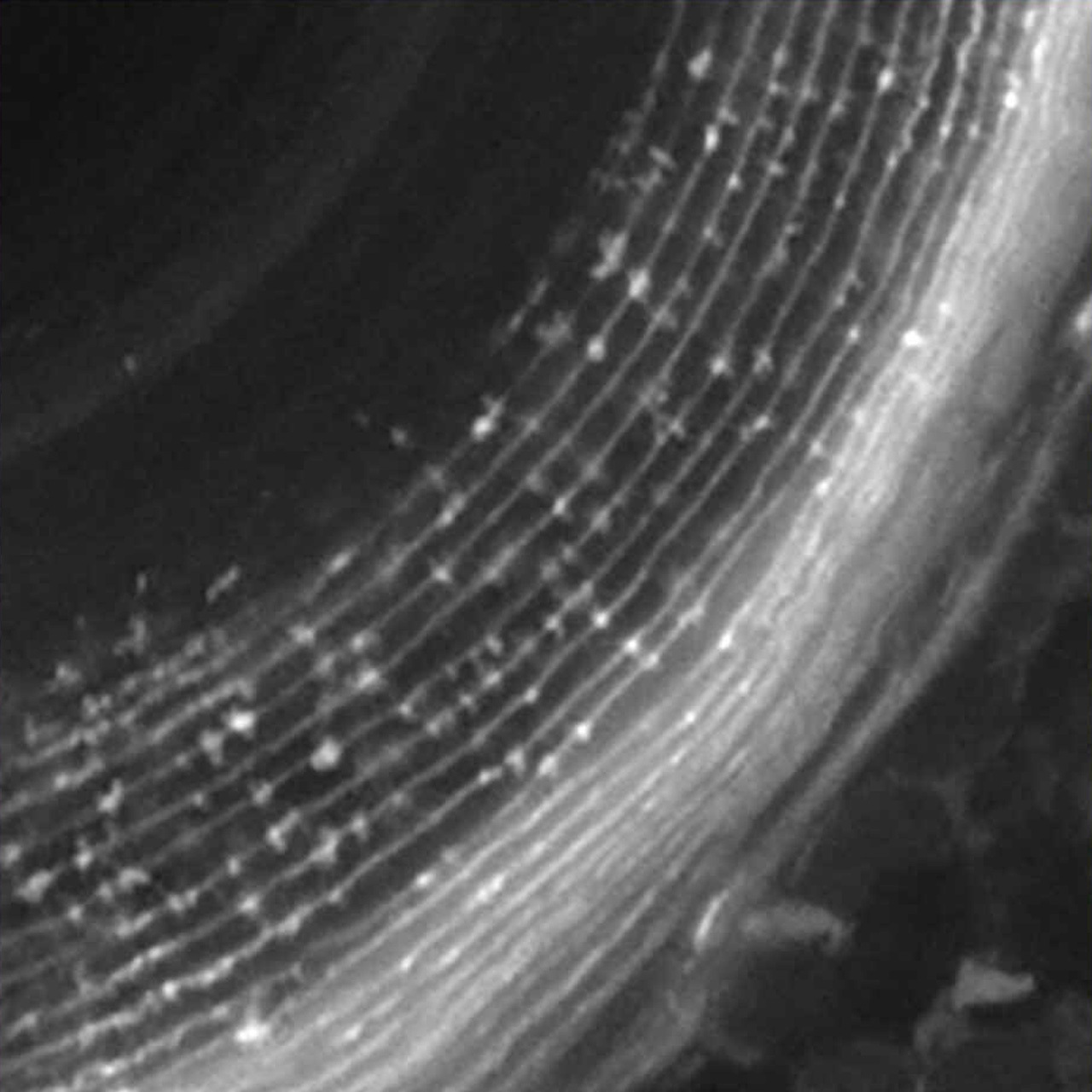
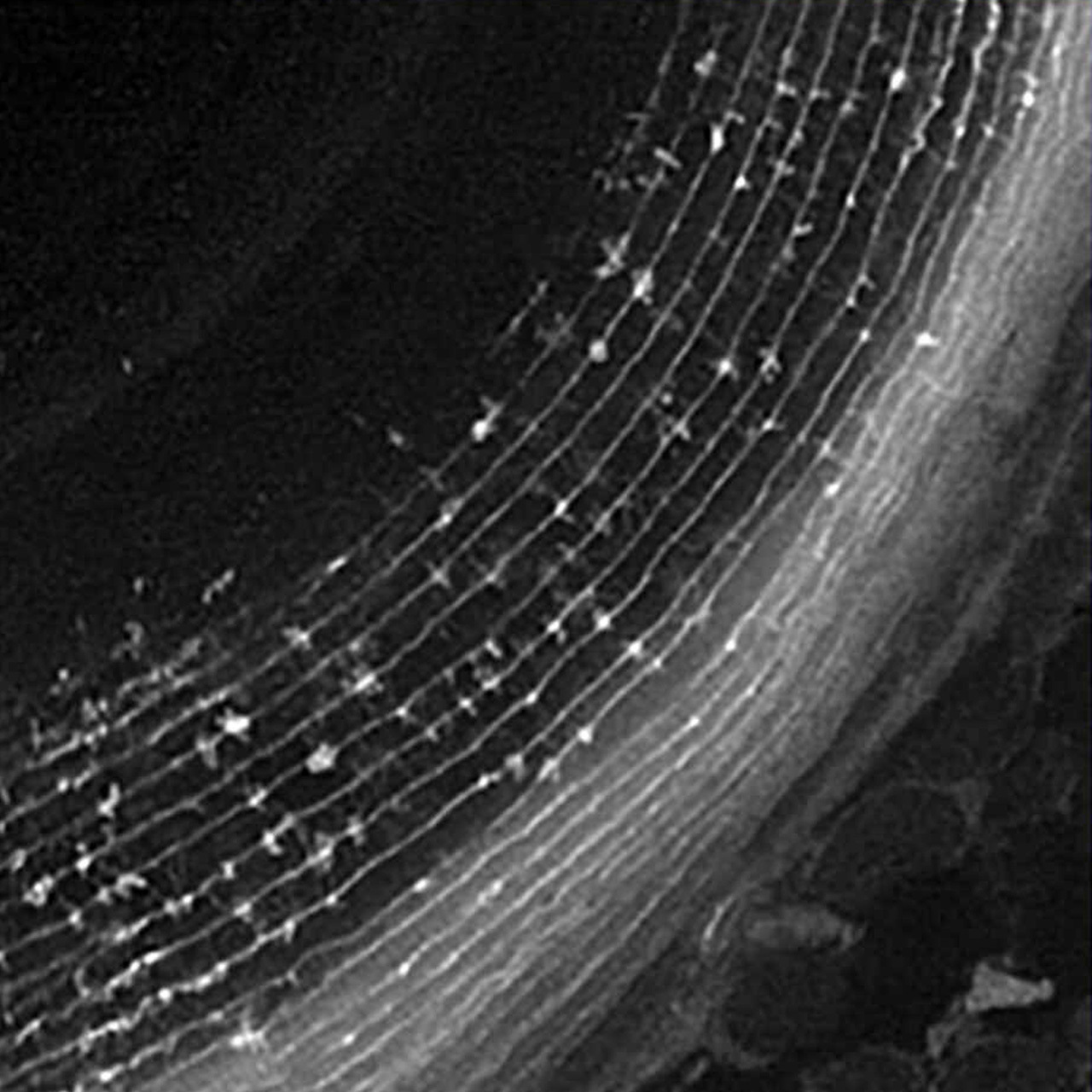
Zebrafish lens at 5 dpf. Nuclei (green) and actin filaments (red) are visualized with Cytox-green and Rhadamine-conjugated phalloidin, respectively. High magnification images indicate lens fiber cells, which become flat and stack against each other.
Image courtesy of: Drs. Toshiaki Mochizuki and Ichiro Masai, Developmental Neurobiology Unit, Okinawa Institute of Science and Technology Graduate University
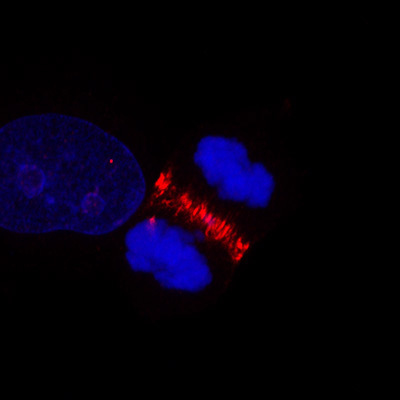
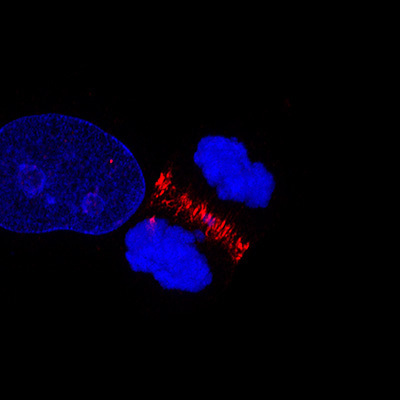
Red: Central spindle, Blue: Nuclei
Image courtesy of: Toshinori Hyodo Ph.D., Department of Biochemistry, Aichi Medical University School of Medicine
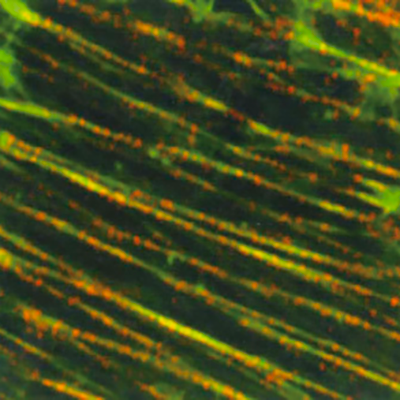
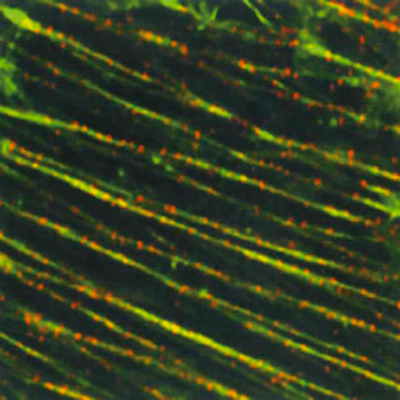
Stress Fibers (LLC-PK1, Pig Kidney Cells), Green: F-actin, Red: Myosin Heavy Chain
Image courtesy of: Keiju Kamijo Ph.D., Division of Anatomy and Cell Biology, Faculty of Medicine, Tohoku Medical and Pharmaceutical University
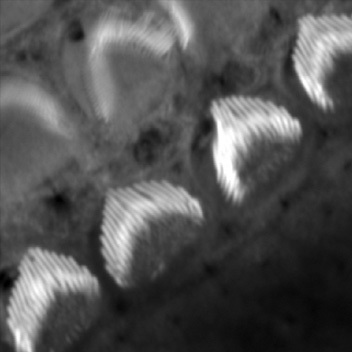
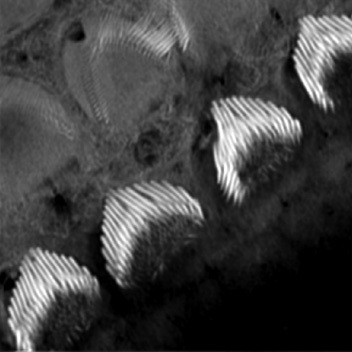
Apical surfaces of auditory epithelia of mouse cochleae were stained by Atto-565-phalloidin at postnatal day 2.
Image courtesy of: Dr. Hideru Togashi, Division of Molecular and Cellular Biology, Department of Biochemistry and Molecular Biology, Kobe University Graduate School of Medicine
NIS-Elements High Content
Total acquisition-to-analysis solution for high-content imaging applications.
NIS-Elements HC, designed for High Content applications, offers specialized tools for whole well-plate imaging, heat maps, graphing, and cell-based image analysis. It streamlines high-speed, automated acquisition, review, and analysis of multiple well-plate experiments, with wizards that simplify setup and parameter definition, including plate configuration, handling, autofocusing, filter switching, and detector control.
Speed and Flexibility
Streamlines high-speed, automated well-plate acquisition, data review, analysis and management of multiple well plate experiments.
NIS-Elements HC interface simplifies experiment setup using wizards. Easily define acquisition parameters including well-plate configuration, plate handling, autofocusing, filter switching and detectors.
① Define general job parameters
• Z-stack
• Sample labelling
• Autofocus
• Sending task completion by e-mail or SNS
② Define optical configurations for image capture
③ Well plate setting
• Define well plate to use
• Select well plate for image capture
• Define XY image capture pattern inside a well
• Sample labelling
④ Define analysis
Review
Realtime viewing of data acquisition and analysis progress for instant inspection. Multiple analysis assays can be run simultaneously during the imaging phase or run post-acquisition on offline stations.
Analysis
Heat maps of well plates, sample images, binary masks, assay results, sample labels and other metadata are centralized for quick filtering, gating and drill down to cellular detail.
Plate view
Heat map
Sample labeling
Graphing
Create graphs instantly for data review. Classify, filter, tile, label data points from several different graph types. NIS-Elements offers histogram, scatterplot, bar chart, XY line, classification and gating functions. Easily navigate within the Plate View and export to Excel or bitmap.


